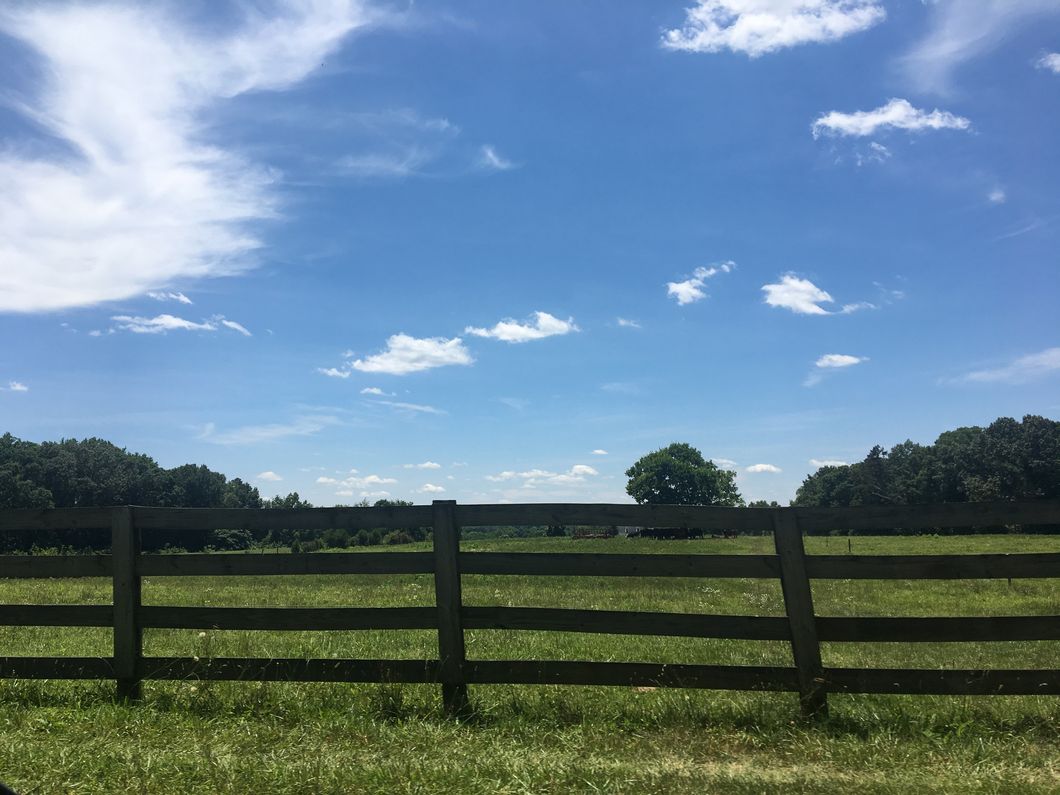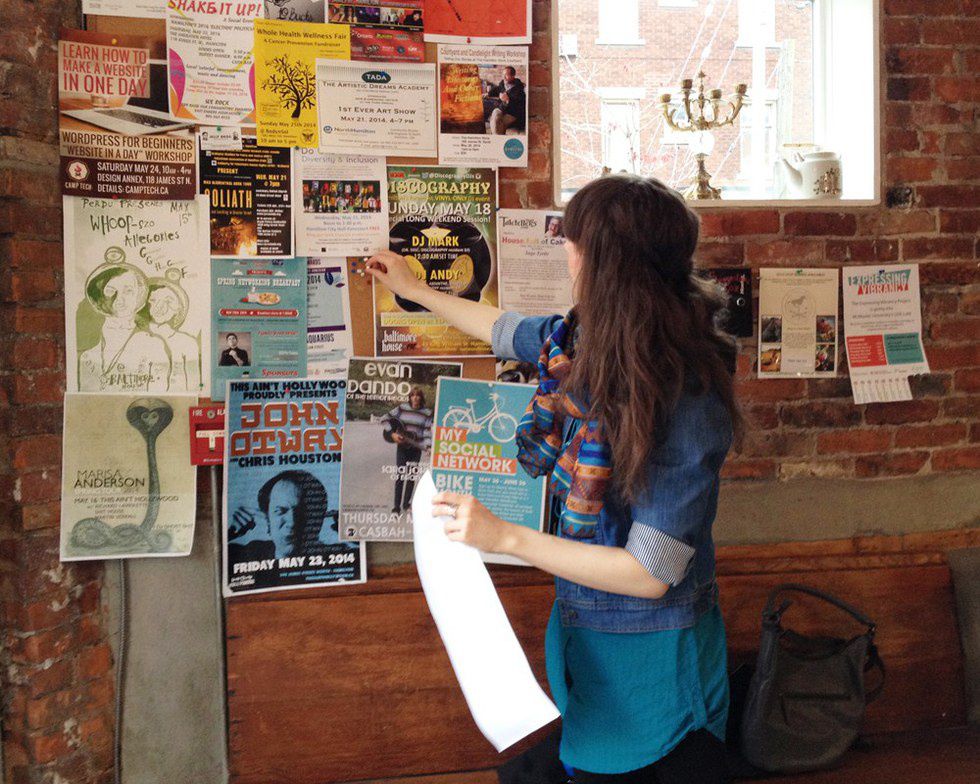Recently there has been a huge push for the removal of plastic straws to "save the turtles." Plastic has become a major conversation when it comes to the impact it has on the environment but is plastic the only thing harming the environment?
The answer to that question is heck to the no.
The clothes you wear, the car you drive, the house you live in, the food you eat, it all has an impact on the environment. Plastic is just one of the hundreds of factors that encourage the decline of our earth. Every decision you make has an impact on the earth.
Everyone who is conscious of their impact on the environment by not using a straw, it's great that you're deciding to help the earth a little, but what if there really was more than you could do, that can make an even greater impact!
You have to look at the bigger picture.
My main focus of change in this article is consuming fewer animal products, and maybe consider going vegan. It's such an incredible lifestyle filled with passion and so much accomplishment. When you make the change, you are putting other creatures before yourself.
Here is some food for thought, all these facts are straight from Conspiracy, an incredible documentary that dives deep into the impact of animal agriculture on our environment. I've seen it 5 times now and every time I learn something new.
"Livestock and their byproducts account for at least 32,000 million tons of carbon dioxide (CO2) per year, or 51% of all worldwide greenhouse gas emissions."
It's not just cars and other forms of transportation hurting our atmosphere.
Goodland, R Anhang, J. "Livestock and Climate Change: What if the key actors in climate change were pigs, chickens and cows?"
"Livestock is responsible for 65% of all human-related emissions of nitrous oxide – a greenhouse gas with 296 times the global warming potential of carbon dioxide, and which stays in the atmosphere for 150 years."
150 years and more of damage done.. wow.
"Livestock' Long Shadow: environmental issues and options". FAO. Rome. 2006
"Agriculture is responsible for 80-90% of US water consumption."
That water you're saving by taking shorter showers is nothing compared to the amount of water you could save if you reduced your meat intake.
"How Important is Irrigation to U.S. Agriculture?" USDA: Economic Research Service. 12 October, 2016
"2,500 gallons of water are needed to produce 1 pound of beef."
Home Water Works estimates that an average American used 17.2 gallons of water per shower. 17.2 gallons for a shower compared to an average of 2,500 gallons for one pound of beef???? Insane.
For more reference, an infographic provided by Cowspiracy states, 1 hamburger = 660 gallons of water = 2 months of showering.
"(NOTE. The amount of water used to produce 1lb. of beef vary greatly from 442 - 8000 gallons. We choose to use in the film the widely cited conservative number of 2500 gallons per pound of US beef from Dr. George Borgstrom, Chairman of Food Science and Human Nutrition Dept of College of Agriculture and Natural Resources, Michigan State University, "Impacts on Demand for and Quality of land and Water." )"
Robbins, John. "2,500 gallons all wet?" Earth Save: Healthy People Healthy Planet.
"Water Content of Things: Data Table 19". The World's Water 2008-2009
"Water". Environmental Working Group.
"Water footprint of crop and animal products: a comparison". Water Footprint Network. (New)
"477 gallons of water are required to produce 1lb. of eggs; almost 900 gallons of water are needed for 1lb. of cheese."
You thought it was just meat didn't you? Nope. All animal products have a huge impact on the environment.
"Water". Environmental Working Group.
"Food Facts: How Much Water Does it Take to Produce...?" Water Education Foundation. (New)
"1,000 gallons of water are required to produce 1 gallon of milk."
Meat, eggs, cheese, and now milk!
Hoekstra, Arjen Y. "The water footprint of food". Water for Food.
"5% of water consumed in the US is by private homes. 55% of water consumed in the US is for animal agriculture."
Ouch.
Jacobson, Michael F. "Six Arguments For a Greener Diet: How a More Plant-based Diet Could Save Your Health and the Environment. Chapter 4: More and Cleaner Water". Washington, DC: Center for Science in the Public Interest, 2006.
"Animal agriculture is the leading cause of species extinction, ocean dead zones, water pollution, and habitat destruction."
This ones a kicker.
"Animal agriculture contributes to species extinction in many ways. In addition to the monumental habitat destruction caused by clearing forests and converting land to grow feed crops and for animal grazing, predators and "competition" species are frequently targeted and hunted because of a perceived threat to livestock profits. The widespread use of pesticides, herbicides and chemical fertilizers used in the production of feed crops often interferes with the reproductive systems of animals and poison waterways. The overexploitation of wild species through commercial fishing, bushmeat trade as well as animal agriculture's impact on climate change, all contribute to global depletion of species and resources. [XIX]"
"What is a dead zone?" National Oceanic and Atmospheric Administration
"What Causes Ocean 'Dead Zones'?" Scientific American
"Nutrient Pollution: The Problem". Environmental Protection Agency
"Livestock's Long Shadow". Food and Agriculture Organization of The United Nations. 2006
Hogan, C Michael. "Causes of Extinction". The Encyclopedia of Earth. June 13, 2014
"The Habitable Planet. Unit 9: Biodiversity Decline// Section 7: Habitat Loss: Causes and Consequences". Annenberg Learner
"Impact of habitat loss on species". WWF Global
Machovina, Brian, et al. "Biodiversity conservation: The key is reducing meat consumption". Science of the Total Environment 536 (2015) 419-431
"Risk Management Evaluation for Concentrated Animal Feeding Operations". U.S. Environmental Protection Agency. 2004Hance, Jeremy. "How humans are driving the sixth mass extinction". The Guardian. 20 October 2015 (New)
Wilcove, David S, et al. "Quantifying Threats to Imperiled Species in the United States". BioScience. Vol. 48, No. 8 (Aug., 1998) pp. 607-615 (New)
"A farm with 2,500 dairy cows produces the same amount of waste as a city of 411,000 people."
2,500 cows = 411,000 people...
"We could see fishless oceans by 2048."
Im not just talking about farm animals, there's also major concern about the fish. Worm, Boris, et al. "Impacts of Biodiversity Loss on Ocean Ecosystem Services". Science. Vol 314. 3 November 2006
Roach, John. "Seafood May Be Gone by 2048, Study Says". National Geographic News. November 2, 2006
Montaigne, Fen. "Still Waters: The Global Fish Crisis". National Geographic
"For every 1 pound of fish caught, up to 5 pounds of unintended marine species are caught and discarded as by-kill."
Think of all those beautiful dolphins and whales you see in the aquariums, they're being effected by fishing too.
"Discard and bycatch in Shrimp trawl fisheries". FAO: Fisheries and Aquaculture Department
"Animal agriculture is responsible for up to 91% of Amazon destruction."
91%...
Bellantonio, Marisa, et al. "The Ultimate Mystery Meat: Exposing the Secrets Behind Burger King and Global Meat Production". Mighty Earth (New)
Oppenlander, Richard A. Food Choice and Sustainability: Why Buying Local, Eating Less Meat, and Taking Baby Steps Won't Work. . Minneapolis, MN : Langdon Street, 2013. Print.
"Each day, a person who eats a vegan diet saves 1,100 gallons of water, 45 pounds of grain, 30 sq ft of forested land, 20 lbs CO2 equivalent, and one animal’s life. "
See all the change that one day can make. Imagine a lifetime of veganism.
"Meat Eater's Guide to Climate Change and Health". Environmental Working Group. 2011
"How much have you saved?" The Vegan Calculator (New)
Ogden, Lillie. "The Environmental Impact of a Meat-Based Diet". Vegetarian Times. (New)
Oppenlander, Richard A. Food choice and Sustainability: Why Buying Local, Eating Less Meat, and Taking Baby Steps Won't Work. Minneapolis, MN : Langdon Street, 2013. Print.
I know that's a lot I just threw in there, but they're all incredible statistics and facts that are needed to understand exactly what goes into your food and why the change is necessary.
I applaud everyone who decides to make changes in their lives for the benefit of our earth, but there is always more that can be done, a step farther, a change that NEEDS to be done.
I was vegetarian for 7 years, and finally, around this time last year decided to go full vegan, a vegan lifestyle, from the food I eat to the products I buy, all free of any cruelty or animal products. It's a big change, but necessary. I have also decided to be more conscious about the impact my clothing has on the environment, and now I only buy second-hand items. That in itself is a hard switch because our society is so swallowed up by consumerism, it's an addiction that was very hard to fight against, and still is, but it's so powerful.
When you are changing your lifestyle for the benefit of someone else, whether an animal or the earth as a whole, it's such an incredible feeling because you're giving up your selfish desires for something so much greater than you, and it's so worth it.
If you've made it this far, I challenge you to try something different tomorrow, maybe choose a meat or dairy free meal instead of your usual, explore your options, do some research. I promise it will only be positive, there is nothing negative about changing something for the benefit of something much larger than you.
For more information on the effects of animal agriculture on our environment, I highly encourage everyone to watch Cowspiracy!
I have added the infographic because it is FILLED with amazing information, give it a look through!

- What Does It Mean To Be A "Strict" Vegan? ›
- 14 Vegetarian And Vegan Restaurants In Florida You Need To Visit ... ›
- yeah straws suck, but the other plastics in our oceans suck worse ›
- 10 Ways To Lead A Straw-Free Life ›
- Please Stop Using Plastic Straws And Start Saving The Oceans ... ›
- Why We Can't Ban Plastic Straws ›
- The Secret Code Behind Your Dutch Bros. Coffee Straw ›
- The Straw Ban Isn't Perfect, But It's A Good Start ›
- Are Plastic Straws Really Killing Sea Turtles? ›
- Save The Sea Turtles: A Proposal For The Boycott Of Plastic Straws ›
- No, Banning All Plastic Straws Is Not The Best Solution ›
- Plastic Straws Only Make Up 0.03% Of The Ocean's Plastic But That ... ›
- Plastic Straws Only Make Up 0.03% Of The Ocean's Plastic But That ... ›
- The No. 1 reason to become a vegan — it's not about your health ... ›
- Package vegan - CRAN ›
- Veganism in a Nutshell -- The Vegetarian Resource Group ›
- What Is a Vegan? What Do Vegans Eat? ›
- Definition of veganism | The Vegan Society ›
- Vegan Outreach: Home ›
- How to go vegan | The Vegan Society ›
- Vegan Action - We Certify Vegan Products ›
- Vegan Made Easy - A healthy plant-based lifestyle - Vegan.com ›
- Veganism - Wikipedia ›
- Straws: UK government to bring in new controls on plastic - BBC News ›
- Five Two Silicone Straws on Food52 ›
- Straw - Wikipedia ›
- Here are 7 alternatives to plastic straws ›
- The Best Reusable Straws for 2019: Reviews by Wirecutter | A New ... ›
- Drinking straw - Wikipedia ›
- Home — STRAWS - a film by linda booker ›
- Why Plastic Straws Are Being Banned ›
- Reusable Straws Handcrafted in the US | Eco Friendly ›
- Amazon Best Sellers: Best Disposable Drinking Straws ›

















